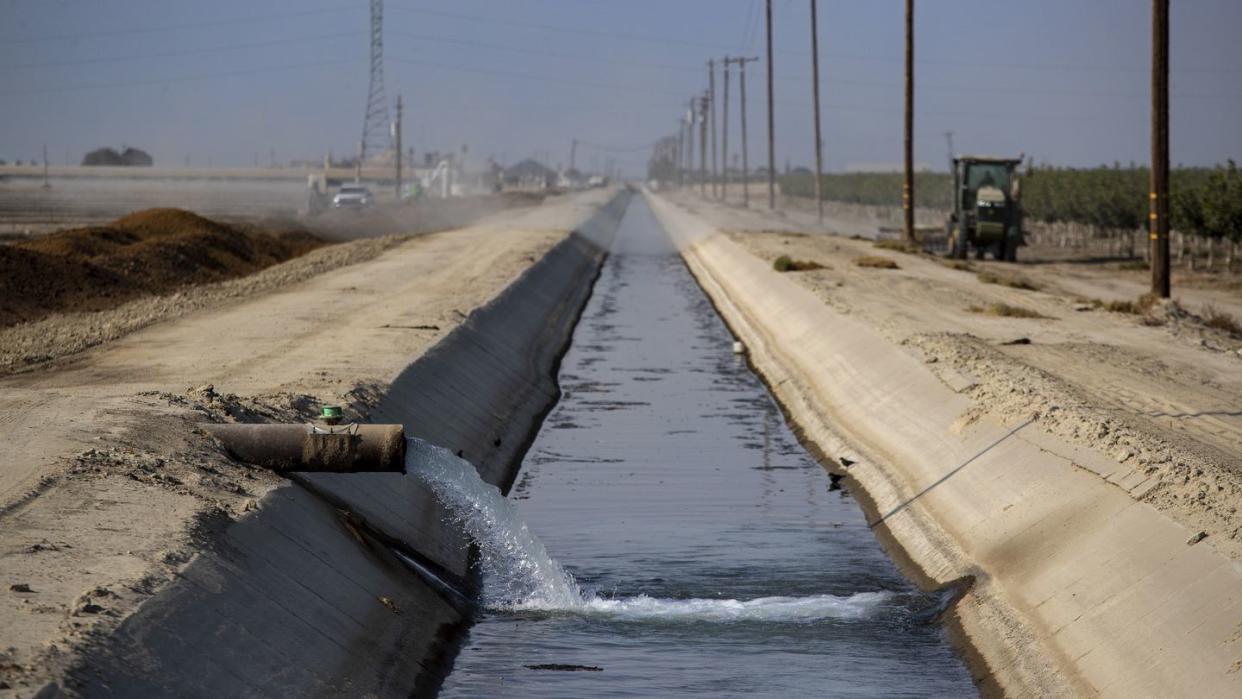America's Aquifers Are Shrinking. Our Survival Is at Stake.

Ample amounts of groundwater throughout North America have made the U.S. the food superpower it is today, but that groundwater is disappearing.
An extensive New York Times investigation looking at 80,000 groundwater wells around the country catalogs the multiple crises facing the U.S.'s groundwater supply in the era of climate change.
Caused by mismanagement and the climate crisis, the depletion of groundwater could effect both farmer's crops and tap water availability.
The North American continent is blessed with plentiful aquifers filled with groundwater that’s allowed the U.S. to create verdant farmland and grow into a food superpower. Ferrying that clean water to homes across the country is also one of the greatest engineering feats of the 20th century. But a startling New York Times investigation this week reveals the fragility of the U.S.’s underground water supply, and how decades of mismanagement and the ongoing threat of climate change are leaving America’s once-bountiful aquifers bone dry.
Although aquifers are buried beneath layers of rock, they supply nearly 90 percent of the country’s water. Creating a data map of more than 80,000 wells, the Times discovered that nearly 40 percent of them were at all-time lows in the past decade. This also isn’t a new phenomenon, as the report says that more wells have seen declining water levels rather than rising ones since 1940.
The cause for these record lows is double-whammy of bad news as decades of mismanagement (primarily overpumping) is now colliding with depleted water levels due to climate change. Although overpumping and mismanagement has been felt most acutely in western states, particularly Arizona which has begun restricting new developments due to groundwater concerns, it’s also occurring in places like western Kansas, Texas, and New York.
Overpumping also brings with it environmental concerns along the coasts where “saltwater intrusion” can seep into fresh groundwater, making it at first poor-tasting and eventually non-potable. This “intrusion” is occurring along most of the U.S.’s coastline except for Alaska and the Pacific Northwest. Drying aquifers can also cause increased the level of cancer-causing arsenic, which is usually trapped inside clay but released into the water supply when met with dry conditions. This means future homes may have to spring for arsenic filters to ensure drinking water is safe for consumption.
All of this rampant over usage would be bad enough, but the Earth’s natural water cycle isn't replacing groundwater like in the good ole days. Overall, the Earth experiences less snowpack, which ultimately means less water flowing into rivers and seeping into the ground. The water that does reach the ground is also evaporating more rapidly due to higher overall temperatures.
A lack of naturally occurring water also means farmers need to rely on more groundwater to supplement their crops, creating an ouroboros of climate change-induced pain the NYT terms a “climate trap.” Experts who spoke with NYT called this practice a “self-defeating strategy” as it essentially uses up water today that’d be better saved for a drier tomorrow.
Rounding out the merry-go-round of awful is the fact that depleting groundwater wells also deforms the landscape. The NYT investigation documents several towns, where pumping water is causing a process known as subsidence, where land that once held water sinks. This process, combined with oil drilling, caused parts of the Houston area to sink more than 10 feet over the course of a few decades.
The first step to solving a problem is acknowledging you have one, and there are strategies to help mitigate the groundwater crisis. Installation of water-saving equipment, practicing responsible farming, reusing wastewater, and implementing desalination where feasible are just a few ideas.
And for such a big problem, we’ll need them all to secure fresh water for the future.
You Might Also Like


